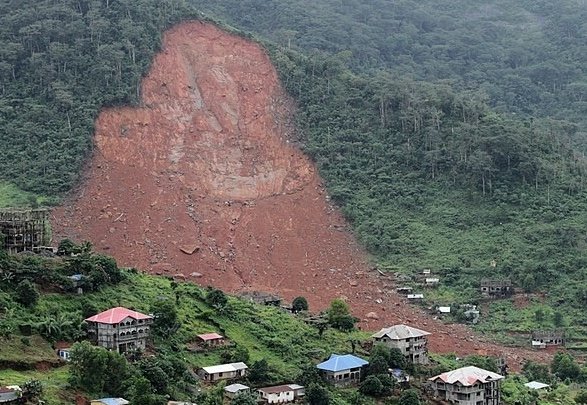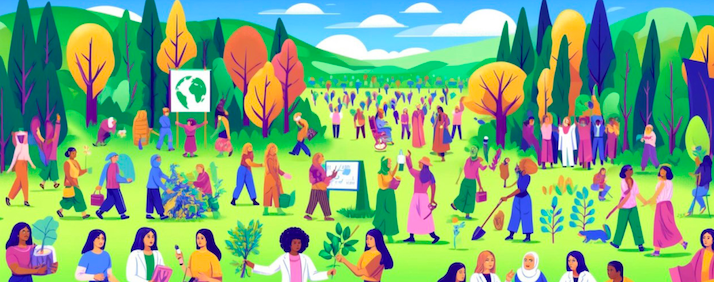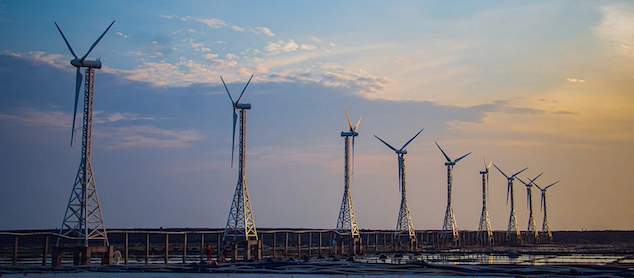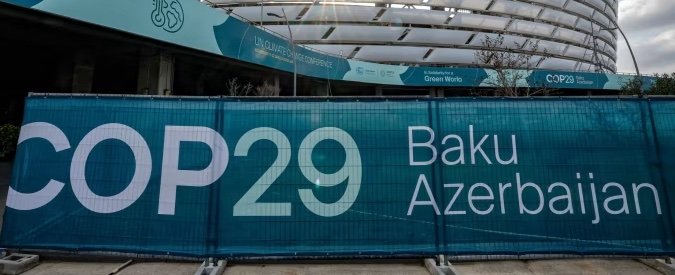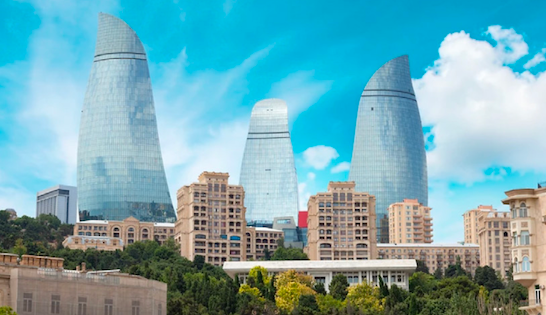Threat to Wildlife and Conservation in Sierra Leone
 Conservation
Conservation
1. Habitat destruction and degradation factors
Habitat destruction and degradation is the most potent threat to biodiversity in Sierra Leone. Biodiversity in Sierra Leone has been subjected to serious threats, both direct and indirect. The most obvious threats include habitat loss and fragmentation of natural habitats due primarily to deforestation, wetland drainage and infrastructural development, overgrazing, poor mining practices, poor farming practices, inappropriate use of agrochemicals, pollution, bush fires, population pressure, civil conflict, poverty, illiteracy, lack of resources, limited trained human power, inappropriate policies, institutional weakness as well as socio-economic factors. The following is a description of various forms of threats to biodiversity from habitat destruction and degradation:
1. Agriculture
The nature of agriculture that has been practiced for centuries in the country is slash-and-burn shifting cultivation, which is considered by the Inter-governmental Panel on Climate Change (IPCC, 2007) as one of the biggest threats to global biodiversity. In fact, it has been estimated that slash-and-burn agriculture is one of the main factors responsible for the depletion of the country’s forest ecosystem to less than 5% its 1900 cover.
2. Wood fuel extraction and logging
Wood fuel (wood and charcoal) is estimated to account for a very high proportion of domestic fuel needs in Sierra Leone. In combination with logging and pole extraction, wood-fuel production is now a leading cause of habitat degradation in various ecosystems, including closed forest, woodlands and mangroves. Many species that depend on these ecosystems are threatened because such activities degrade the micro-ecological integrity of their habitats, distorting their feeding, foraging and breeding activities. In response, some species tend to retreat into deep areas in closed forests or other pristine habitats where they could find suitable alternative habitats for survival. However, for some species, with delicate and rare microhabitat requirement, any distortion could be disastrous to their local populations. The rate of wood, charcoal and log production is so high nowadays that the rate of habitat recovery is hardly keeping pace with the rate of depletion. The recent introduction of the power-saw into wood processing for logs and charcoal is a very potent factor that is accelerating the destruction and degradation of forests. As a result there is always a tendency to extend wood extraction into pristine areas and reserves. Although logging can sometimes be selective, the increasing demand for building poles and logs is causing indiscriminate extraction in recent times.
* Increase in population
The accelerated rate of population increase coupled with rural to urban migration in the country, have over the last two decades necessitated the expansion of housing in towns and cities throughout the country. The situation was exacerbated by the 1991 – 2001 civil war during which large numbers of rural inhabitants migrated to safer areas in main towns and cities. Consequently, the numbers and sizes of slums increased, whilst unplanned housing construction in vulnerable areas escalated, putting great pressure on the natural support systems and resources and almost permanently obliterating the natural ecological systems of these locations. Some of these areas were forests and intertidal coastal systems that use to support a diversity of both terrestrial and aquatic birds, respectively.
One typical example is the proliferation of housing on the previously forested hills overlooking the city of Freetown, which use to hold significant number of wildlife species. Another is the expansion of settlements along the Freetown estuarine coast, where large numbers of migratory water birds used to visit, particularly the Aberdeen Creek. Bird numbers have declined significantly as a result of changing ecological conditions in these sites as with many other sites in the country. Both hillside and coastal erosion events are causing serious sedimentation of once productive coastal habitats important for bird feeding and roosting activities of migrant birds.
* Mining
The deleterious effect of mining on the environment and biodiversity is glaring and this is evident in many areas in the country. Mining contributes an average of about 4 to 10% of the country’s GDP (depending on the quantity of minerals mined and the global market price), and provides among the highest private sector employment in the country.
The production of iron ore by two large mining companies between 2008 and 2012 was the reason for the dramatic growth in the country’s GDP, up to about 20% in 2013. However, by all indications, mining constitutes one of the most significant threats to biodiversity today. Huge areas of land are being deforested and degraded in various parts of the country, resulting from various mining operations. In Kono, large portions of land have been left to waste following diamond mining.
In Mokanji and Rutile, huge areas of land and vegetation are degraded through bauxite and rutile mining, respectively; whilst in Ferrengbiai and Lunsar, similarly destructions are happening as a consequence of iron ore mining. The destructive nature of the mining and the dumping of mine tailings is rendering many viable habitats ecologically redundant, as in most instances, mine tailings are inert and support little or no wildlife. Artisanal is destroying viable habitats and riparian ecology of a number of floodplains, estuarine, river and streams systems around the country. Vast areas of riparian zones and flood plains have been devastated by unregulated artisanal gold and diamond mining, whilst Sierra Leone’s Biodiversity Strategy and Action Plan NBSAP 2017-2026 31 illegal zircon mining threatens the ecology of some parts of the coast. A general observation from various field surveys show that birds that depend on riparian ecologies (such as kingfishers, crakes and ducks), were absent from river systems in the east of the country that have experienced years of sedimentation from both artisanal and industrial mining activities.
* Natural factors (Climate Change)
Climate change has become one of the most important discussions in international agenda on the environment. It is a natural phenomenon that has been scientifically proven to be accelerated by human activities, and has been blamed for a number of extreme weather conditions, including floods, heat waves and bush forest, with devastating consequences on people and nature. A report by Karim and Okoni-Williams in 2007 for the National Adaptation Programme of Action (NAPA), indicates that climate change has the potential to distort a range of ecosystem processes that may lead to permanent changes to bird diversity and bird habitat in future. Although the evidences are not immediately apparent, the long dry spells with intense solar heat and the changes in annual precipitation period coupled with irregular strong winds and heavy rainfall are enough signs of changing climatic conditions that may affect birds and their habitats. As birds are considered indicators of ecological change, it follows that such changes in ecological conditions is affecting a significant diversity of flora and fauna. Rising sea levels is depleting habitats for birds and other coastal/marine wildlife along sections of the coastlines of the Sierra Leone River Estuary.
* Direct off-takes and Wildlife Harvesting
Direct off-takes refer to the taking of wildlife either dead or alive from their natural environment. The practice was done through subsistence hunting and trapping and historically allowed for natural recovery of wildlife, but presently, the association of the trade with trafficking and economic gain, has made it deleterious to wildlife populations.
* Wildlife trafficking
Anecdotally, wildlife trafficking is becoming a serious threat to Sierra Leone’s biodiversity. The wild bird trade target species included estrilids, hornbills, grey parrots, orioles and starlings among others. The skins of most other species are the main reasons for hunting them rather than food. There are cogent evidences that the skins of pangolins, pythons and boars, crocodiles and the shells or turtles and tortoises are smuggled out of the country. Currently, the most significant threat from trade in wildlife trade and trafficking comes from cross- border activities through the Republic of Guinea, for live trophies, and to a lesser extent, Liberia, where monkey and other bush meat are delicacies.
* Hunting and trapping
Hunting is a very widespread activity. Hunting using shot guns declined because of the general embargo on guns due to the civil war (1991-2001). However, trapping using snares is a widespread practice as it is very common to come across dozens of snares in a forest patch, for species of various sizes ranging from rodents to monkeys and buffalo. Local hunters mainly hunt for subsistence and almost all species of wildlife are targeted, including primates (chimps and monkeys). There are also isolated incidences of hunting and trapping of threatened birds like White-necked Picathartes, White-breasted Guinea fowl
* Domestic Waste Disposal
Domestic waste comprises human wastes, laundry waste and solid waste (garbage). About 70% of all households in Freetown and big towns use pit latrines. About 20% have cesspits and 10% use rivers, coastlines and the bush. In the smaller settlements 80% of the inhabitants use the beaches as toilets. In Freetown sewage from pit latrines and cesspits are only partially treated and discharged into the sea. In addition untreated sewage is discharged directly into the Sierra Leone River Estuary through four main sewer lines or outfalls (Murray Town, Kingtom, Government Wharf and Cline Town). Each of these outfalls is found close to certain bays and creeks: Aberdeen, Whiteman’s bay, Kroo Bay and Cline bay. Solid waste collected in Freetown is disposed of at two dumpsites.
* Marine and Coastal Infrastructure
Almost all coastal activities require some amount of infrastructural development. Many tourist concerns have built hotels, guest houses and environment centres close to the coast. There are possibly more than 50 such centres along the entire coast. Other activities may include construction of silos, pipelines and jetties. Regular be channelization, dredging and Sierra Leone’s Biodiversity Strategy and Action Plan NBSAP 2017-2026 38 filling occur at the three major ports (Queen Elizabeth II Quay, Pepel, and Nitti).
08-10-2024

